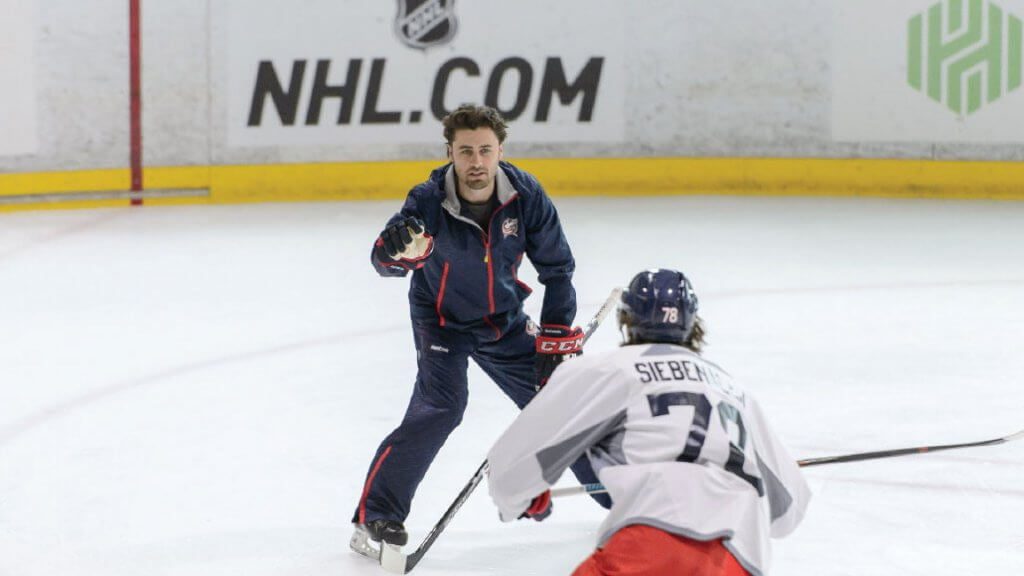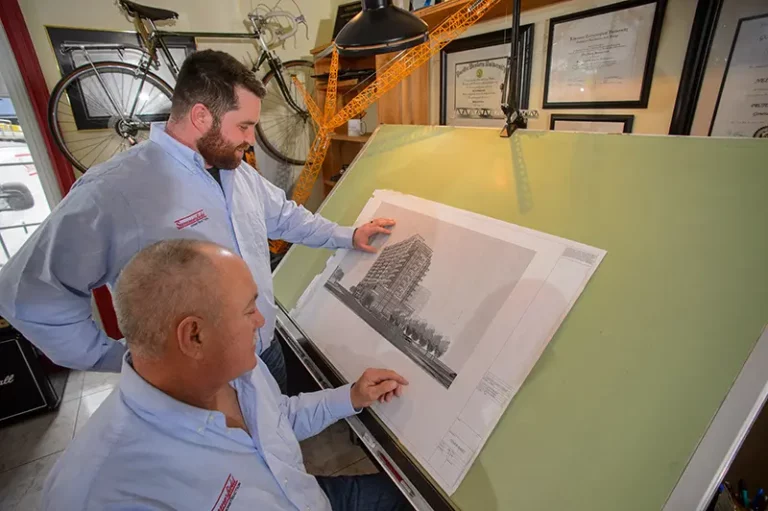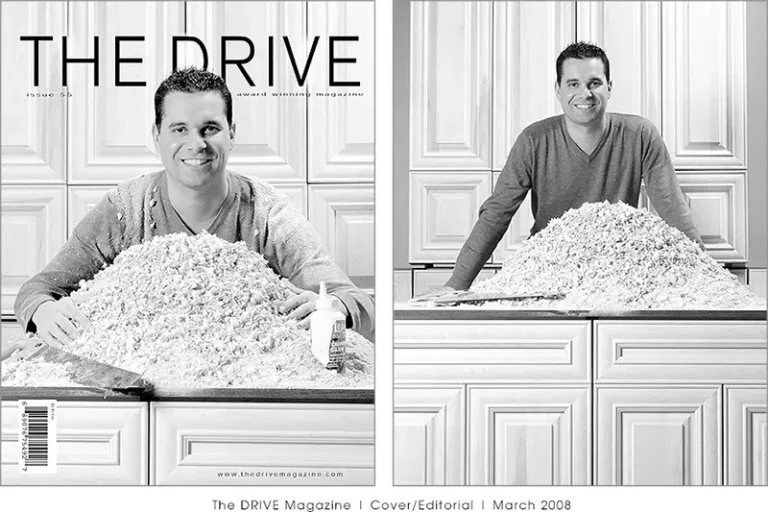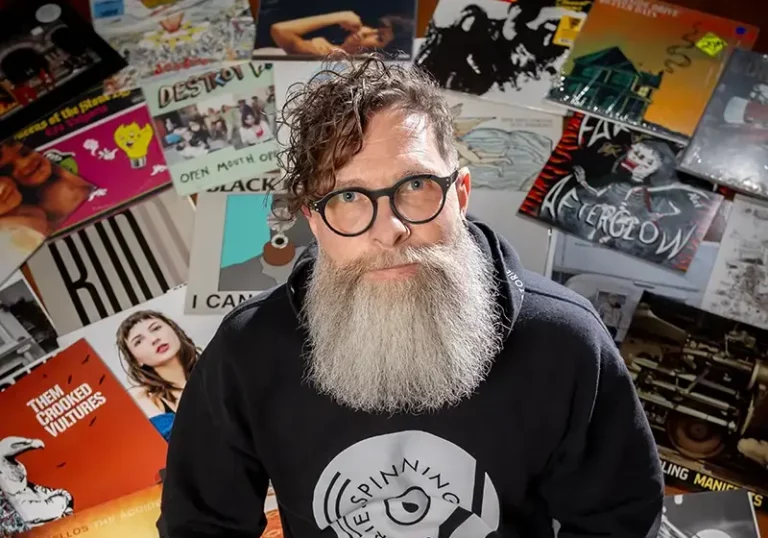Lee Harris is as comfortable completing figure eights and jumps on toe picks as he is rushing the blue line and shooting a puck in a hockey net. It’s a unique combination but somehow it doesn’t seem so rare once you get to know the energetic and affable man wearing the skates. But his victories haven’t come without consequences; as someone who’s taken up two sports that can be very dangerous physically, Harris has had his share of accidents on the ice, but he’s overcome the breaks and has passed on his knowledge to others, keeping them safer while playing sports
Today, Harris uses his diverse skating skills in his position as a skating consultant for the Columbus Blue Jackets of the NHL and Cleveland Monsters of the AHL. He is also working with Ohio State University’s men’s and women’s Division 1 hockey teams. He calls it a dream job and says, even after five seasons, he still can’t believe that he—once a young kid from Harrow, Ontario—is now giving advice to players in the NHL.
But let’s go back to Harrow in 1984, when a three-year-old toddler first laced up his skates. He remembers the first day in skating class when they advanced him four levels—an early sign that he was born to be on the ice. At six or seven he was competing as a figure skater in towns and cities across Ontario. He began playing minor hockey in Harrow and by 1997 had won three All-Ontario championships.

Hockey practice alternated with figure skating practice, making him a very busy young man. While there were some jokes and comments from teammates about his figure skating, they could see how it helped his game
Over the next four years he played Junior C hockey with the Kingsville Comets hockey team and with the Belle River Canadians. Between games he laced up his figure skates and travelled to various skating competitions with his skating partner Alyshia Fox. The pair found modest success competing at Canadian Nationals and competing for Canada in 1999 in Dallas, Texas. He says looking back at his high school years he never got in trouble because he never had time.
“I would say when I was 15, 16, I was on the ice seven hours a day and up. Every day I practised figure skating at least one and a half hours before school, then got out of school early to do one and a half hours after school at hockey, then games all evening,” said Harris. “It was certainly pretty busy.”
Harris says he wanted to make sure his life had balance, but listening to him describe his “other” activities, it’s remarkable he found enough hours in a week to fit it all in. He said he often wondered himself how he did it. “I loved high school and was on student council and took part in other sports so I could be with my friends,” said Harris. “I played soccer, basketball, volleyball, and did cross-country. I absolutely loved running and was good with long distance. The one thing that was really difficult was keeping weight on.”
Not everything in high school was about sports. He wasn’t big on going to teenage parties, but he played trumpet and guitar and was a member of the school orchestra. He also had a girlfriend who, not surprisingly, was passionate about sports, mainly basketball. They were best friends and dated until Harris was 19. He said they “motivated and lifted each other up.” The two remain friends today
His life may have been pretty good growing up, but it was not without challenges. Harris says the greatest lessons he learned came from when he lost hockey games or skating championships. During one particularly rough competition he fell no fewer than six times and finished dead last. But that did not mean giving up. “I remember not being able to sit on my butt on the way home from London,” he recalls. “Those were the times that made me work harder. There are bad days and you get through them. Sports mimic life and there are hard lessons to be learned to help you through life. And it’s not always about winning.”
When he was 16 and had just moved from the Comets to Belle River, he broke his ankle figure skating—a nasty setback for an athlete, and a potential career-ender for a skater. But Lee saw it as another obstacle that would make him stronger. “If you never had a struggle, it’s going to be hard to overcome one because you’ll have nothing to fall back on,” said Harris. “You have to be prepared for the bad days.”
Those bad days can come at you fast and furious. Some of his very darkest days happened when he and Alyshia went their separate ways and it felt like his skating career was over. He turned to his parents for advice and kept skating and working out. He also took to the internet to let the skating community know he was looking for a new partner. Finding a skating partner, he says, is like a marriage in that it has to be the “right fit.” Each partner needs a certain body type and style in the other person to complement each other and to make it work. He looked across the country with no luck for a girl who matched his five-foot-eight frame
With no prospects in sight, he began putting a back-up plan in place. He loved planes and aviation has been a lifelong passion. He decided he wanted to go into the Air Force and become a fighter pilot. Then fate stepped in.
“I was contacted by people in Connecticut in the U.S. who had seen some of what I had done in the past. They asked me to try out with their skater Colette Appel,” said Harris, who at first said “no thanks.” The initial reaction came partly from a fierce loyalty to Canada. “I grew up always wanting to represent Canada at every level of hockey and figure skating, so when I was asked to potentially move and compete for the United States, my first reaction was a definite no.” The next day they called again. His love for the sport won out and he agreed to go.


“Just when I thought it was all coming to an end, things started working out. I went to Hartford for a week in July 2000 and the first time I skated a lap around the rink with Colette, I knew I had found a perfect match. I came home and told my dad I was moving there—two weeks later I did. Just one phone call changed my whole path.”
Harris and Appel began skating together but had to sit out of competitions for one year because he was a Canadian—the International Skating Union rules state that partners who are from different countries must sit out a full year before competing together
During that year he also began coaching a young hockey player. It was somewhat daunting for the still-teenage Harris to work with a 14-year-old student. Harris stood before the kid, wondering, “What do I teach him?” The young student said, “All right coach, let’s go.”
“So, I taught him what worked for me,” Harris continues. “From there he made his high school team, which was his goal, and other organizations heard about the improvements I was making in the hockey world.”
He and Appel were also working hard. In January 2002, the pair won the U.S. national junior title and in March 2002 placed 12th in the world junior championships in Norway. In 2003 they placed fourth at two ISU Junior Grand Prix events and on the senior level. They went to the Olympic Trials in 2006 but did not qualify.
Deciding to retire from competitive skating in 2006 was difficult, but it was the right time. “I felt that my partnership with Colette had taken us as far as I thought it could have and I wasn’t interested in pursuing another partner,” he said. “Looking back, the only thing that would have kept me competing was chasing the Olympic dream longer, and with so many uncertainties in the sport—politics, injuries, the day-to-day grind—I knew it was time to move on.” Harris began a five-year run skating professionally on Royal Caribbean cruise ships. He travelled throughout Europe, the Caribbean, and the east and west coasts of North America on five different ships.
“I toured all over the world and living that life was pretty fantastic,” said Harris. “I did up to four shows a week and I loved it. When I wasn’t on a ship, I came home to see my folks in Harrow and spent a lot of time in Columbus.”
The attraction in Columbus was a pretty blonde he met on a downtown street. He and a buddy were taking photos and she jokingly asked if they were getting good pictures. Harris started talking to her and he was smitten. He knew Chelsea Koenigseker was someone special.
In 2011, aware that life was taking him down another path, he retired from professional skating and moved to Columbus. In 2012 and 2013 he became a nationally ranked figure-skating coach, having led his pairs figure skating team to the U.S. championships. He also started a hockey coaching business using his unique methods, which he dubbed the Lee Harris Skating System, running skating camps and clinics.
In 2013 the upward trajectory of his life was stalled when his 55-year-old mother Sally, who had been diagnosed with breast cancer in 2008, lost her second battle with the disease. She left her son with very precious memories of a funny, brave, and courageous woman. “She was beautiful and the way she handled being sick was to make everyone else feel good,” said Harris. “She would wear goofy hats to chemo and crazy wigs that made people light up when they saw her. Her motto was ‘Everything happens for a reason,’ and once said ‘Cancer has been a blessing in my life because it has shown me what’s truly valuable and what’s important.’ I’ve never forgotten that. She was pretty special, and her words stuck with me.”
Back in Columbus, Harris’s reputation continued to grow. He had developed his own niche as both a figure skater and a hockey player, giving him an understanding of both sides of the blade and a unique edge. Within a year the Columbus Blue Jackets began hearing about the success he was having with AAA hockey players and in 2014 hired him as their skating consultant
“I can talk the hockey lingo, I understand the game, but I also understand body positioning, the quickness of the feet, and tightness of the turns and edges that figure skating brings,” said Harris. “I was able to make really quick changes in players in a short amount of time they had not seen before. They interviewed me, had me on the ice to show what I could do, and hired me. They said it was a ‘no-brainer.’”
Harris said it was interesting to see how big strapping hockey players would scoff at the very idea that figure skating could be harder than hockey … but soon changed their attitudes once he put them through a session of exercises that he knew would make them hurt.
Meanwhile, with their romance flourishing, Harris and Koenigseker married in 2015. Their daughter Sadie was born in 2016 and daughter Lana two years later. Harris is a devoted family man and much of his busy day revolves around his girls, bouncing back and forth between the rink and home throughout the day
Despite being busy, his hometown is never far from his heart. His father Roger is a barber in Harrow and Harris clearly has a close relationship with the gregarious Welshman. Roger is proud of his talented and successful son and makes sure people sitting in his chair, or a casual visitor, knows everything about him before leaving. Harris groans when you mention that the walls of his dad’s shop are covered with newspaper articles about him and numerous photos. “It’s like a shrine,” said Harris, laughing with a tinge of embarrassment. “I keep telling him to take them all down, but I don’t think that’s going to happen.”
It isn’t unusual for Harris to have young Harrow hockey teams visit him in Columbus, taking them to Blue Jackets games, getting on the ice with them, and introducing them to the NHLers. He also returns to Harrow to hold hockey clinics. In December 2018 he held a holiday clinic and donated the funds raised to the Hospice of Windsor and Essex County, in honour of his mother.
He returned for another clinic in March. Watching him on the ice with a dozen young eager hockey students, one can see his passion for what he does and his joy teaching young people. He puts them through their paces, pushing them to work harder, all the while yelling encouraging remarks
Off the ice, the young players get out of their hockey gear and find him in the lobby of the arena. It’s hard to decide who is having more fun—the players or the coach.
“That’s the best part of my job. Watching the kids’ eyes light up when they get to be around an NHL guy or just being at a practice and teaching them is amazing,” said Harris. “Being able to pass on what I know to them is the best thing.”
Hockey is a rough sport and Harris constantly reminds young players that safety is a priority. He is aware of the grim statistics on brain injury caused by playing hockey. Research by the Canadian Institute for Health Information shows brain injuries from hockey in 2014-15 in Alberta and Ontario were almost double those from cycling, football, rugby, skiing, and snowboarding. The greatest number of those injuries occurred among children ages 10 to 14. Harris said he has worked with many NHL players whose careers have been cut short
“The game is constantly evolving and there is not as much fighting. The goon type of player with the strong body is now scoring goals,” said Harris. “Kids should be wearing the best protective gear possible and if a player of any age gets hit on the head, there’s a strict protocol that includes seeing a doctor and not being allowed to return to the game unless a doctor confirms it’s safe to play again.”
For figure skaters, Harris said they were doing jumps without any padding. Today, they wear padded shorts and have much more protection during practice (however, padding is still illegal in competitions). He feels confident that if coaches, parents, and players have the knowledge they need, it will make hockey and figure skating safer for everyone on the ice. At the arena in Windsor, kids from the clinic have gone home and Harris stops to talk with another member of his family fan club—his older sister, Anita Medeiros, who was watching with pride as he talked with the players after the clinic. She said no one who knows her brother is surprised at his success.
“We always knew he would do great things in life,” said Medeiros. “He was never arrogant. He was a good genuine kid who had that special spirit and drive and he was popular. Right from being three or four years old he had a passion for sports.”
Part of Harris’s charm is his confidence mixed with an air of modesty. He has not lost the joy and wonder of doing a job he enjoys getting up for in the morning. He also takes nothing for granted.
“When I met Dalton Prout, a defenceman for the Blue Jackets, we talked about his hometown, Kingsville, and mine in Harrow and all the people we knew in common,” said Harris. “We laughed at the idea that here we were—two little Essex County kids—hanging out with NHL hockey players. It was surreal how it felt that life had come full circle.”




